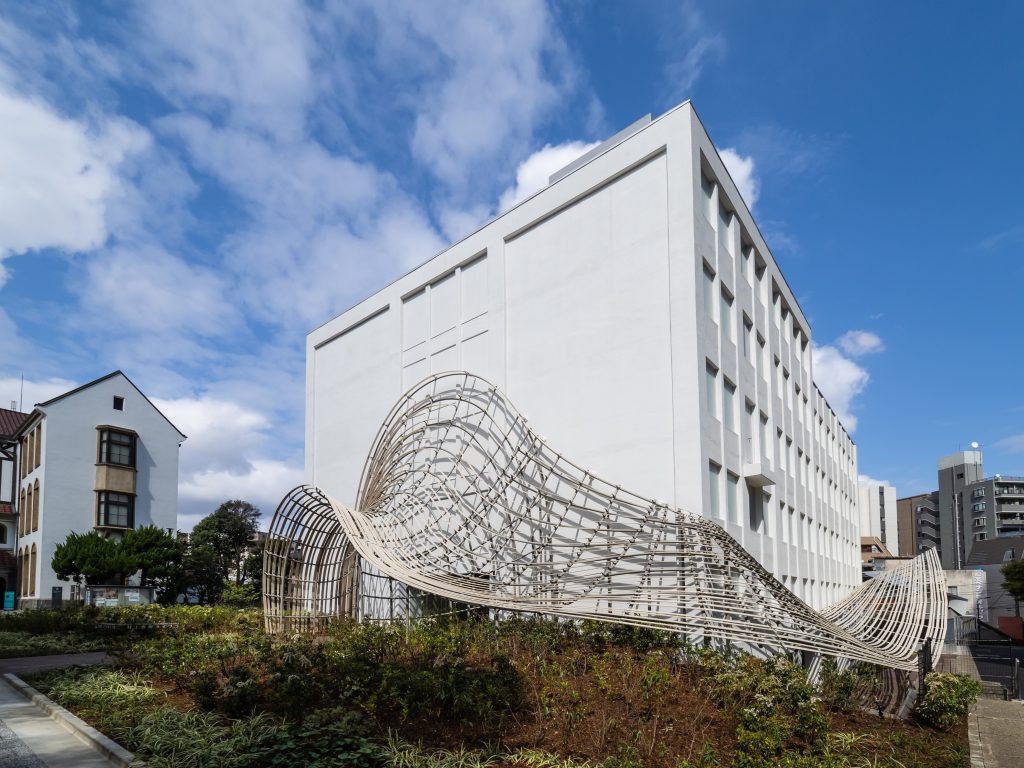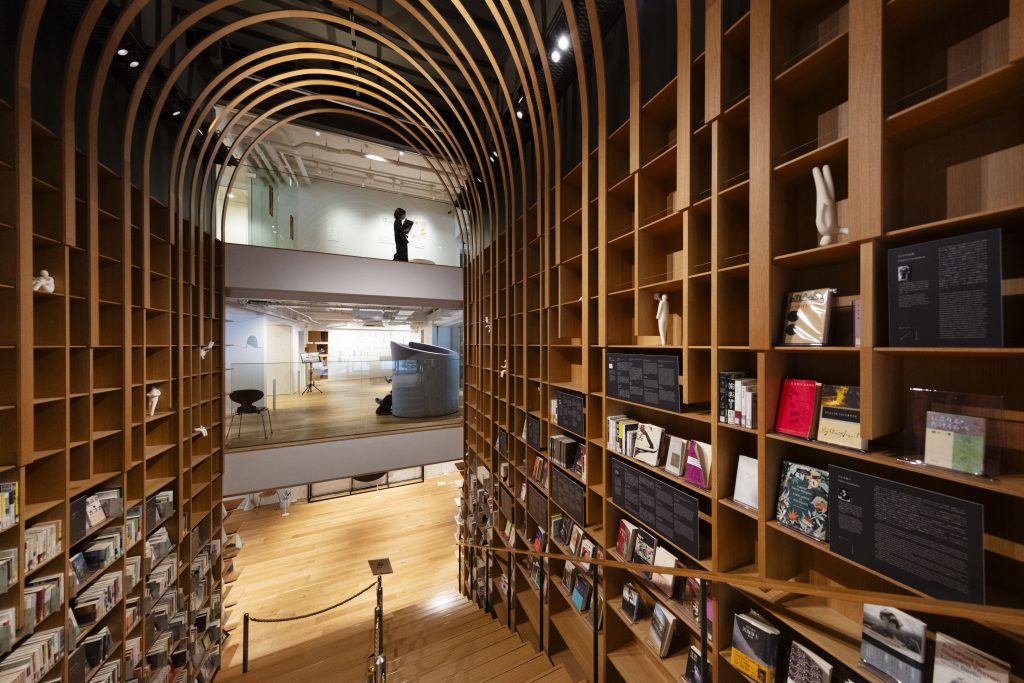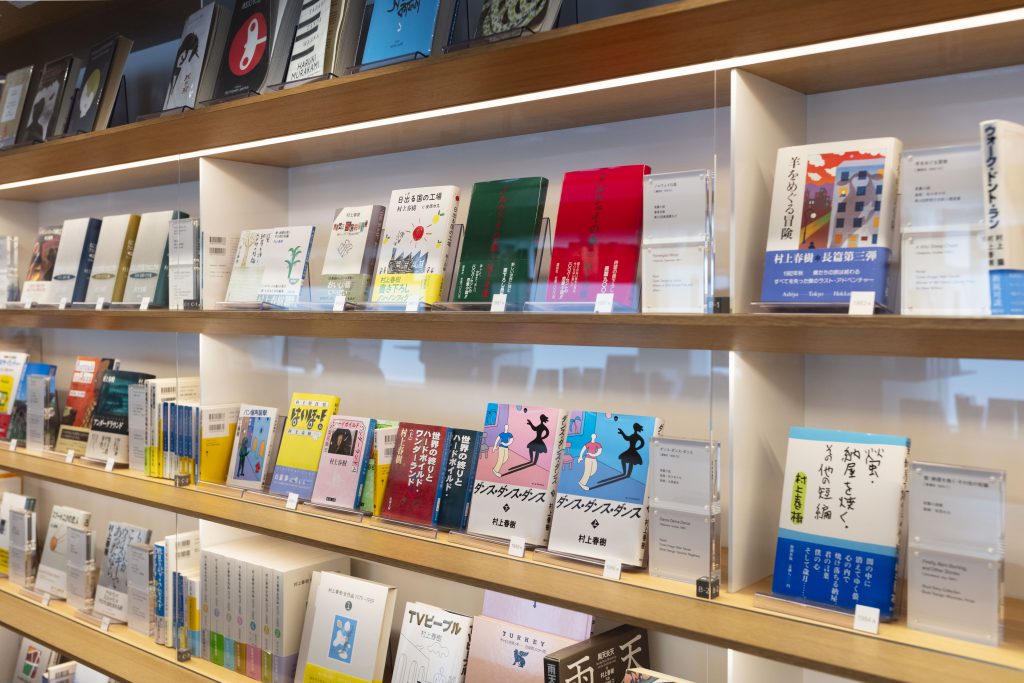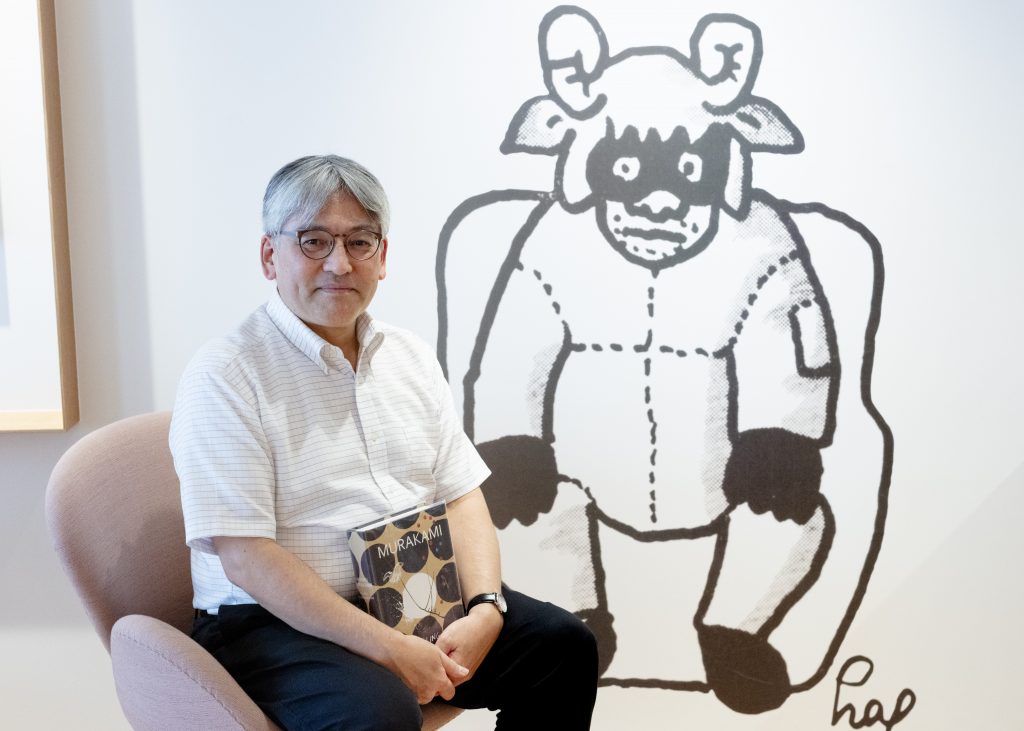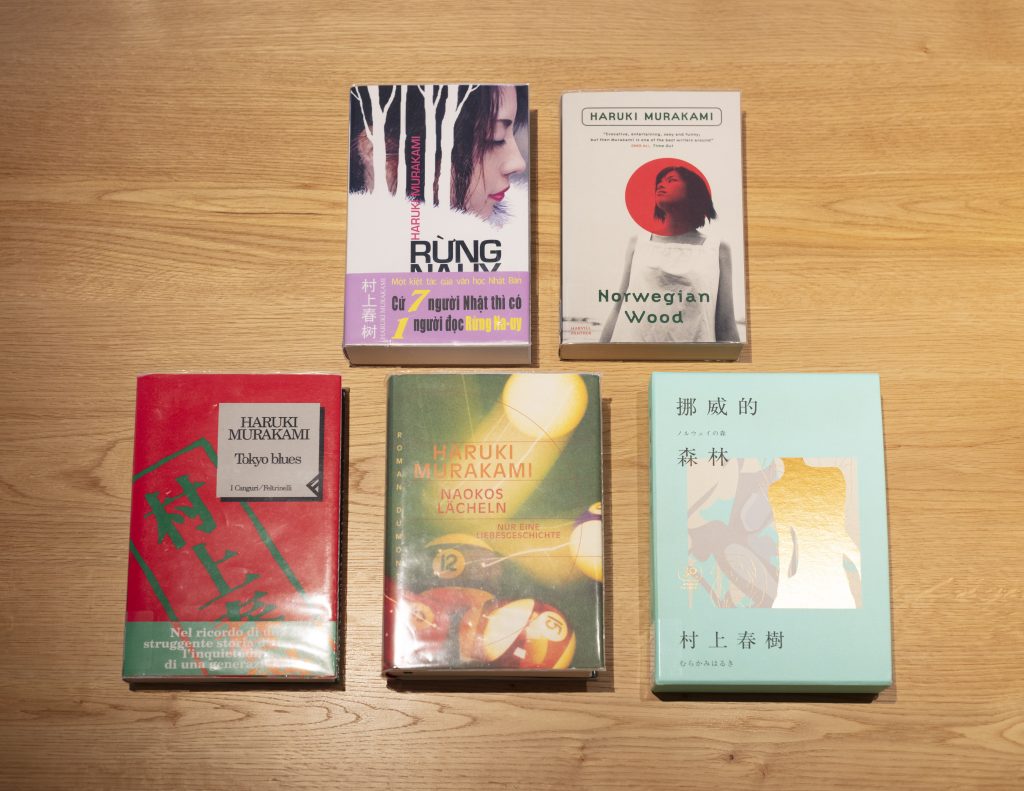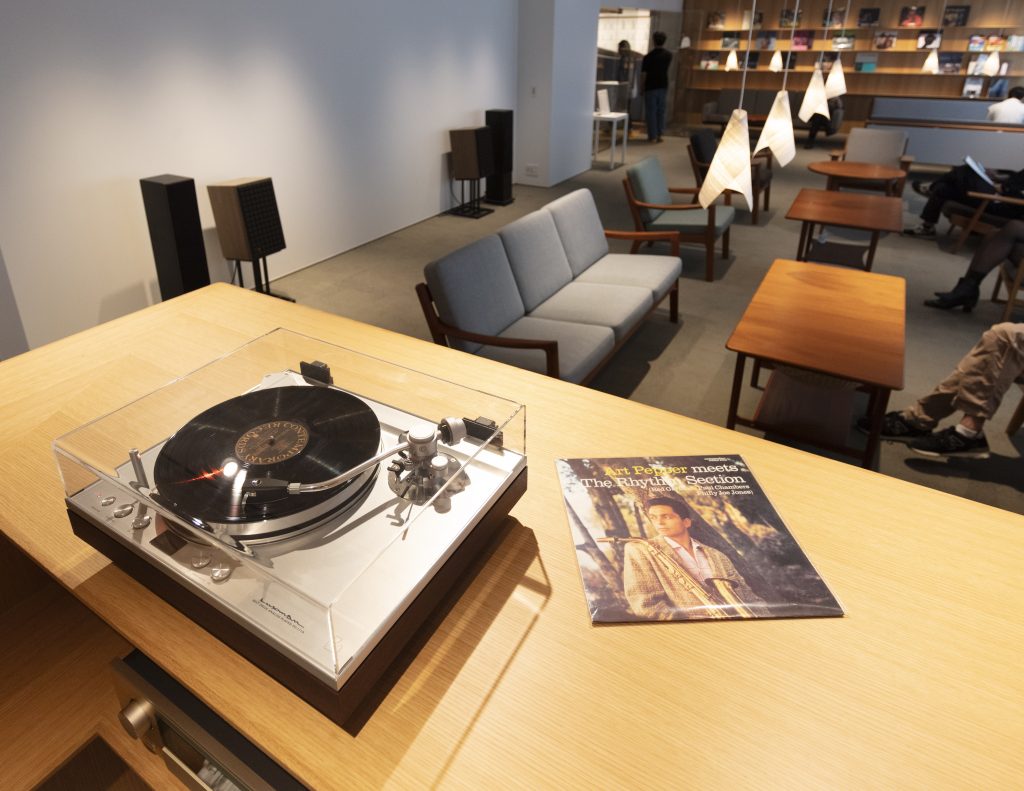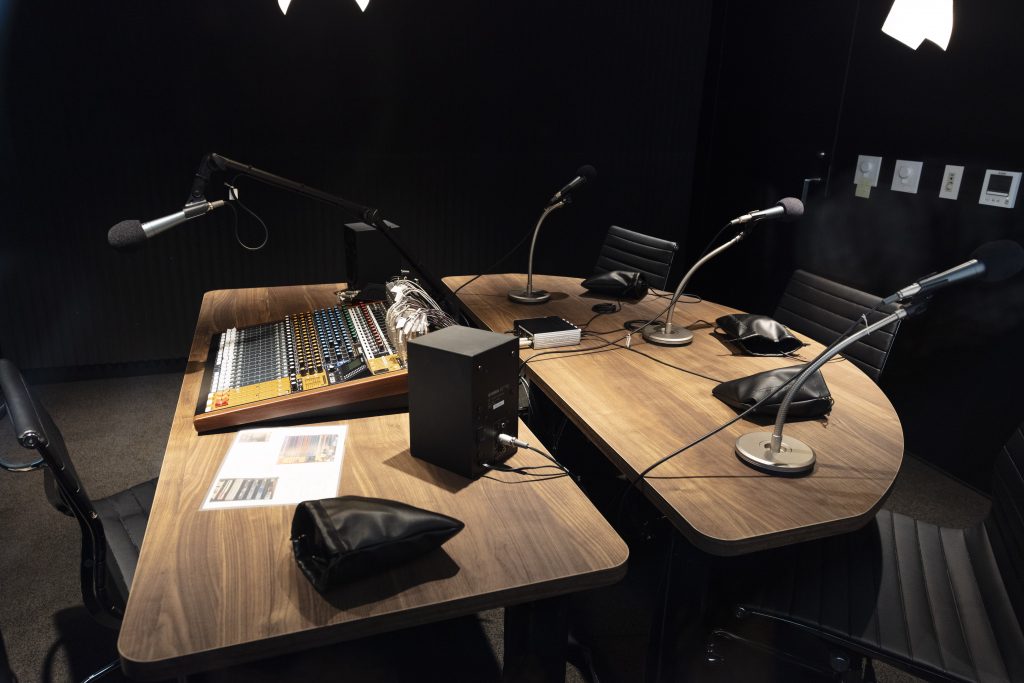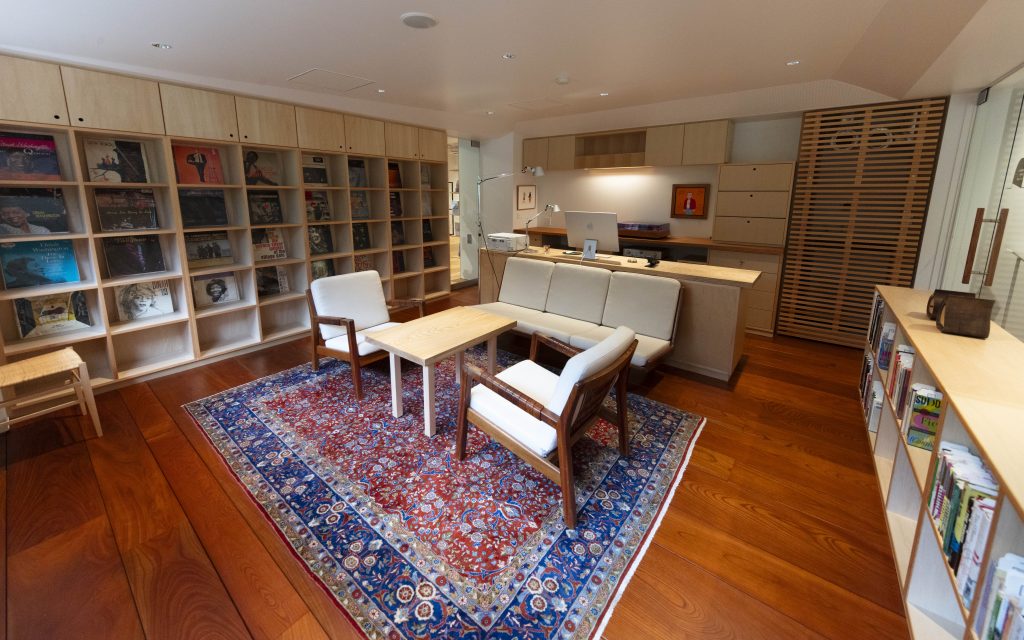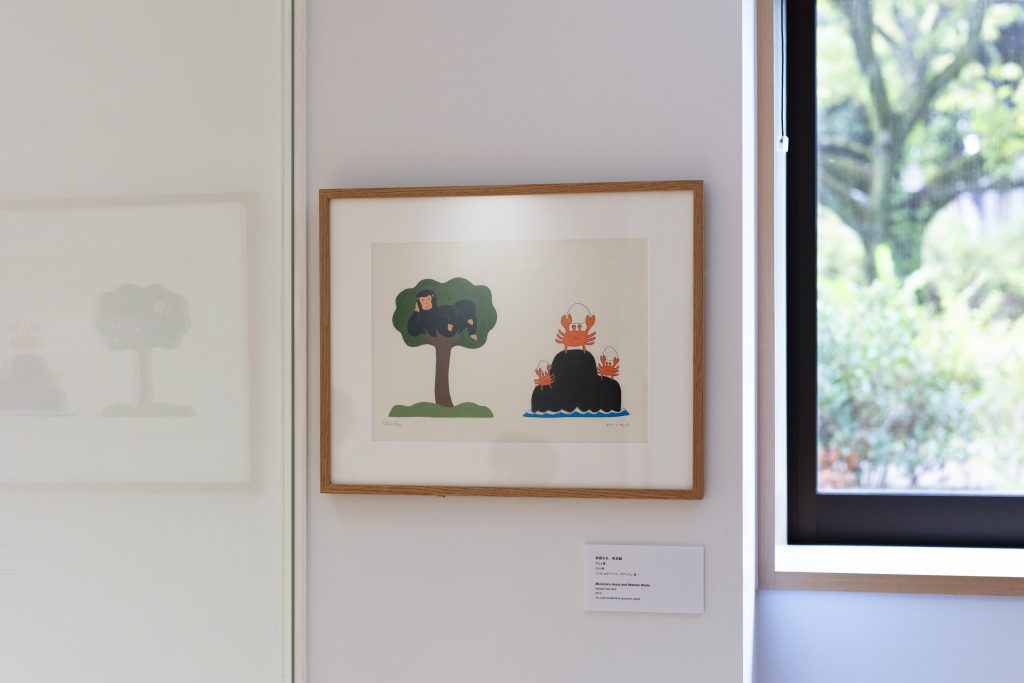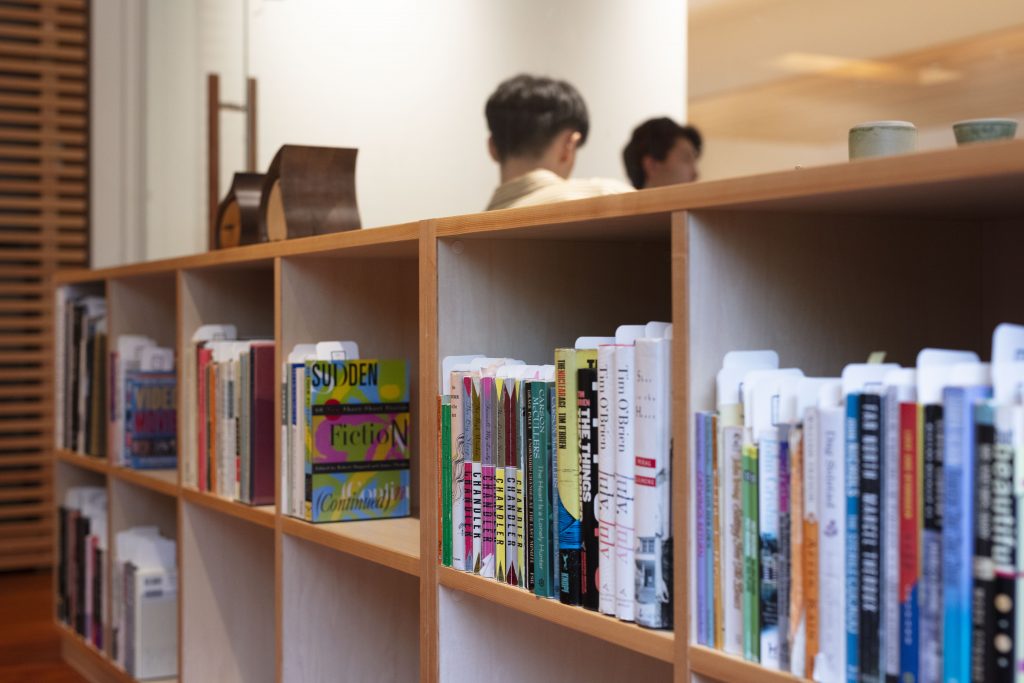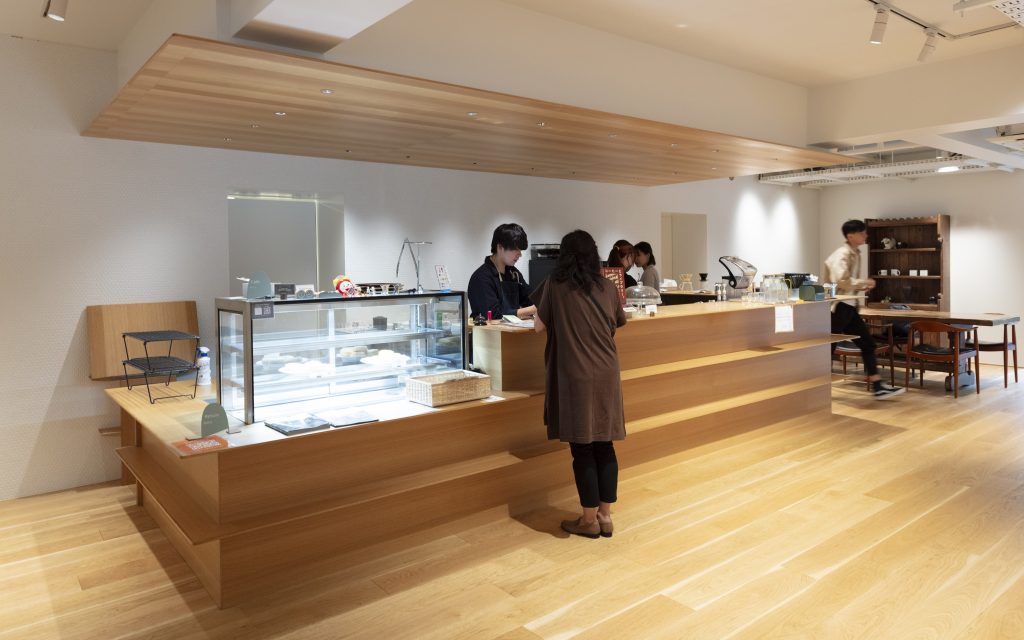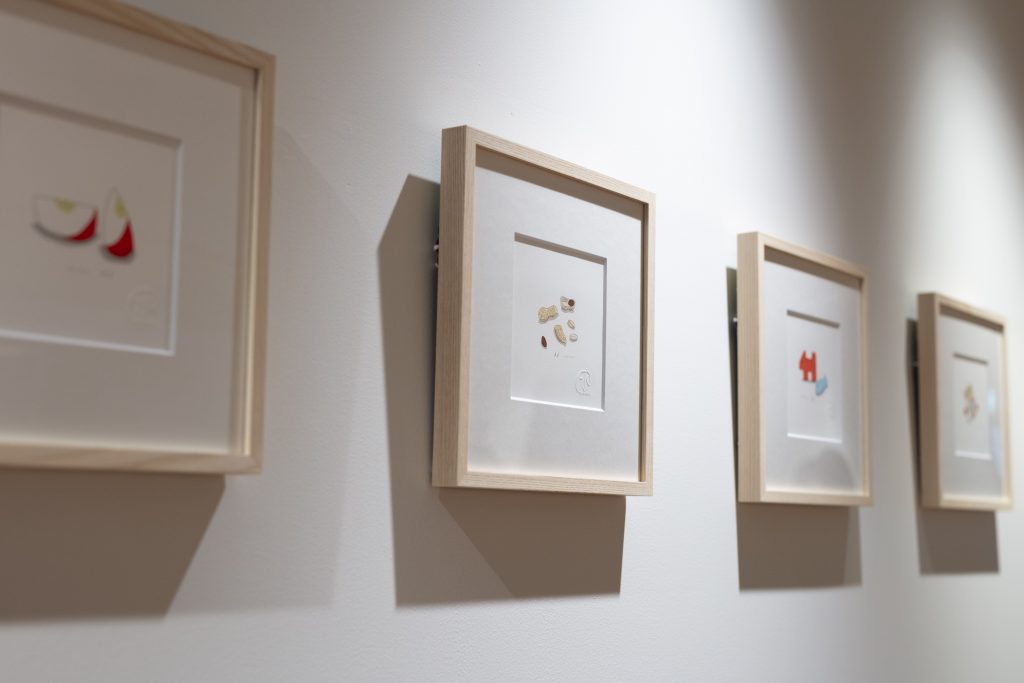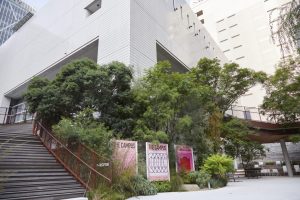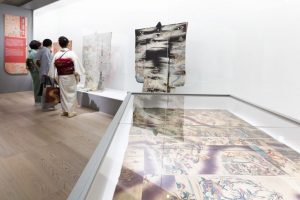As you walk into the Waseda University’s Waseda Campus, you begin to see the Waseda International House of Literature (The Haruki Murakami Library) with its undulating wooden canopy. The building used to be connected to the School of Political Science and Economics building by a corridor. The neighboring Tsubouchi Memorial Theatre Museum is known as another memorable place where Mr. Murakami used to read film scenarios as a student.
The building was renovated by architect Kengo Kuma. When Mr. Murakami was visiting Odense, Denmark, in 2016 to deliver the Hans Christian Andersen Award lecture, he met Mr. Kuma, who was also in the area for the Hans Christian Andersen Museum project. Mr. Kuma had long been Mr. Murakami’s fan, and the two got along right away and began to exchange communications.


